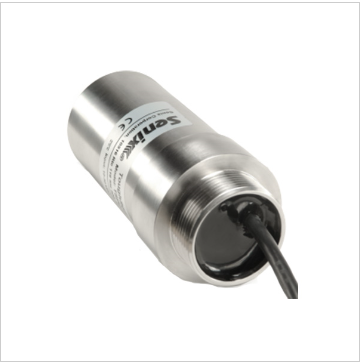The Advantages And Disadvantages of Ultrasonic Liquid Level Meter Are Introduced
Ultrasonic liquid level meter is a non-contact instrument using the principle of echo ranging. The principle of echo ranging is also known as the principle of travel time or travel time measurement. It is transmitted through a device that can emit energy waves (generally pulse signals), the energy wave is reflected when it encounters an obstacle, and the reflected signal is received by a receiving device. The change of level is determined according to the time difference of measuring the energy wave movement process. The energy wave signal is processed by an electronic device and eventually converted into an electrical signal related to the level. A liquid level meter that uses ultrasonic wave as an energy wave is an ultrasonic liquid level meter

The advantages of ultrasonic level meter are very prominent, mainly reflected in the following aspects:
1、Simple structure, easy to read, very easy to install and maintain.
2、Clean and assured, long service life of the instrument, stable and reliable measurement, high precision.
3、Non-contact measurement is adopted, which is not easily affected by the viscosity and density of the liquid.
Of course , the so-called weakness. Ultrasonic level meter also has its own limitations and insurmountable defects, specifically, mainly in:
1、There is a blind spot in ultrasonic level measurement. A dead zone is an area that the meter cannot measure. In the process of ultrasonic pulse transmission, the small area near the ultrasonic transducer usually cannot receive the sound wave. The size of the blind area where the sound wave cannot be received is related to the measurement distance of the ultrasonic wave. Generally speaking, the measurement distance is small, the blind area is small; The measuring distance is large, the blind area is large;
2、Ultrasonic level measurement is easily affected by temperature. In the actual measurement, the change of temperature will lead to the change of sound speed, which will lead to the error of measurement.
3、There should be no obstructions below the sound waves. Because the ultrasonic liquid level meter uses the principle of acoustic reflection to achieve liquid level measurement, if there are obstacles will affect the ultrasonic emission, resulting in signal loss, affecting the measurement effect;
4、Ultrasonic level gauges should not be used to measure pressure vessels. Since the pressure mainly affects the probe, and there is a certain relationship between pressure and temperature, the change of pressure will affect the change of temperature, and then affect the change of sound speed, so that the measurement accuracy is affected;
5、Ultrasonic level gauges can not be used in situations where there is water mist, a large number of foamy media, and volatile media. Because this condition is easy to absorb sound waves or interfere with sound wave emission, the signal is lost and the accuracy is reduced;
6、Ultrasonic level meter is greatly affected by dust. This is because although the dust environment has a small impact on the speed of sound, the impact on the attenuation of sound waves is very obvious, so do not use ultrasonic level gauges as much as possible in the presence of dust.
Ultrasonic level meter in addition to the advantages common to most ultrasonic level meters, there are some of its own characteristics and advantages:
1、Non-contact continuous measurement, with temperature compensation function, can be used in the environment of large temperature difference, high accuracy, strong adaptability.
2、It has RS-485 communication interface and adopts special echo processing mode to effectively avoid false echo.
3、There are three ranges of 5 meters, 10 meters and 15 meters to choose from, which can be applied in different industrial environments.
4、High explosion-proof rating (ExdIICT6Gb) and protection rating (up to IP66/67).
5、PVDF The material probe ensures reliable measurement in corrosive liquids or corrosive environments.
6、High cost performance, low maintenance cost, simple structure, convenient installation.
 沪公网安备31011502401909
沪公网安备31011502401909